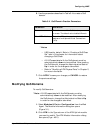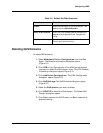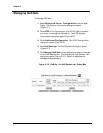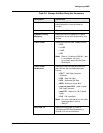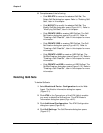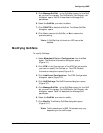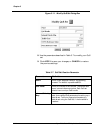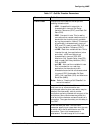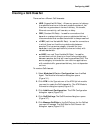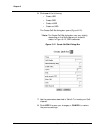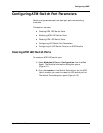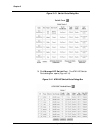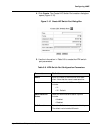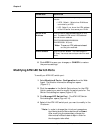
Cajun P550/P880 ATM Uplink User Guide, Version 1.1
Configuring LANE
3-21
Traffic Class
Displays the traffic class for the set you are
creating. Values include:
•
UBR
- Unspecified bit rate which is
characterized in terms of Cell Delay
Variation Tolerance (CDVT), and Peak Cell
Rate (PCR).
• CBR - Constant bit rate. This is used by
connections that request a static amount of
bandwidth that is continuously available
during the connection lifetime. This amount
of bandwidth is characterized in terms of
PCR, maxCTD, peak-to-peak CDV, CLR, and
Cell Delay Variation Tolerance (CDVT).
• rtVBR - Real-time variable bit rate. This is
intended for real-time applications (voice
and video). rtVBR connections are
characterized in terms of PCR, SCR,
Maximum Cell Transfer Delay (maxCTD),
peak-to-peak Cell Delay Variation (CDV),
CLR, and MBS.
• nrtVBR - Non-real-time variable bit rate.
This is intended for non-real-time
application that have bursty traffic
characteristics and which are characterized
in terms of PCR, Sustainable Cell Rate
(SCR), Cell Loss Ratio (CLR) and Maximum
Burst Size (MBS).
Note: Refer to “Creating a QoS Class Set” for
more information.
CDVT Enter the Cell Delay Variation Tolerance. When
cells from two or more connection are
multiplexed, cells of a given connection may be
delayed. Simultaneously, cells of another
connection are being inserted at the output of the
multiplexer. Some randomness may affect the
inter-arrival time between consecutive cells of a
connection. The upper boundary on this delay is
the CDVT.
PCR Enter the Peak Cell Rate. This is a traffic
parameter specifying an upper bound on the rate
at which traffic can be submitted on an ATM
connection. The unit of measurement is
cells/second. The valid range is 2 to line rate.
Table 3-7. QoS Set Creation Parameters
Parameter Definition



